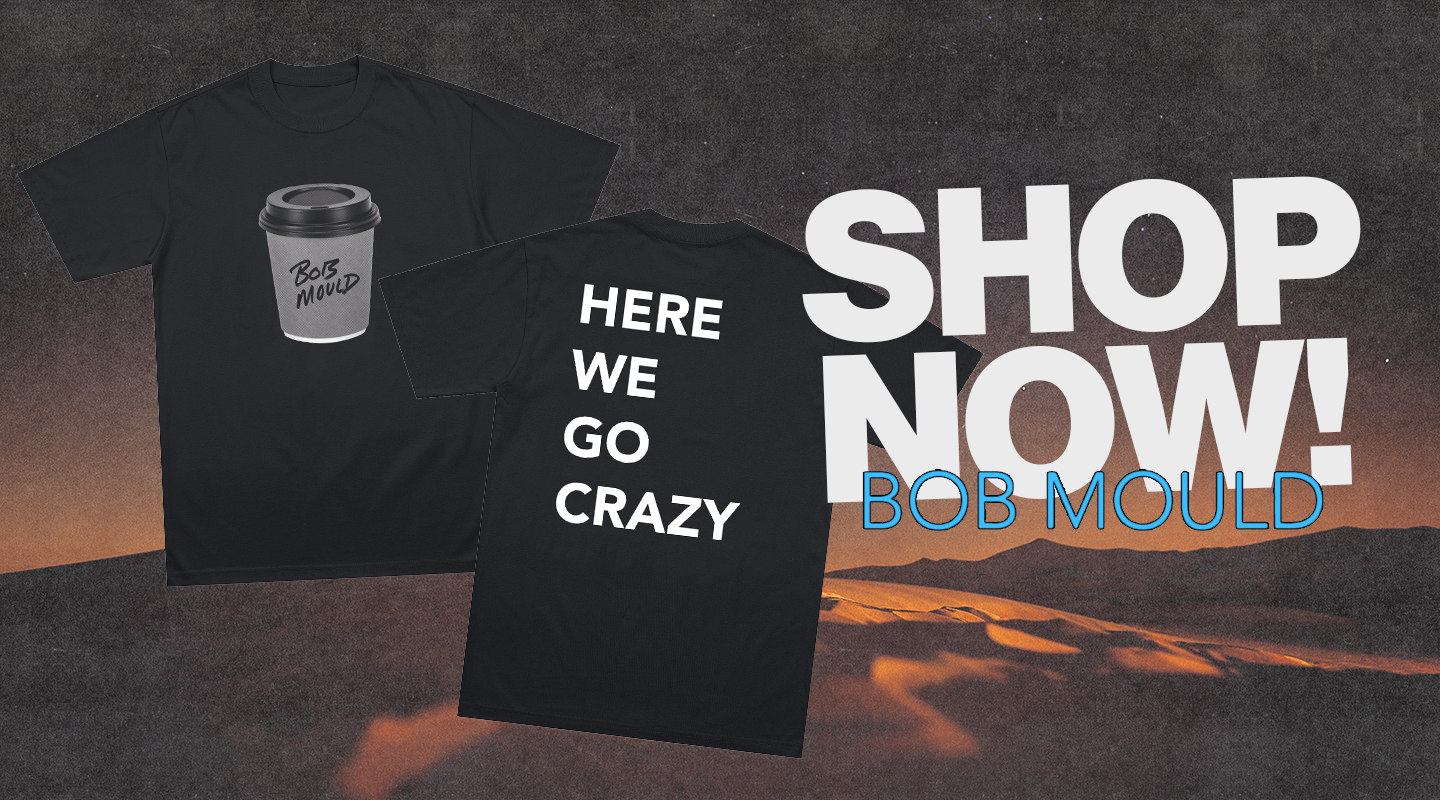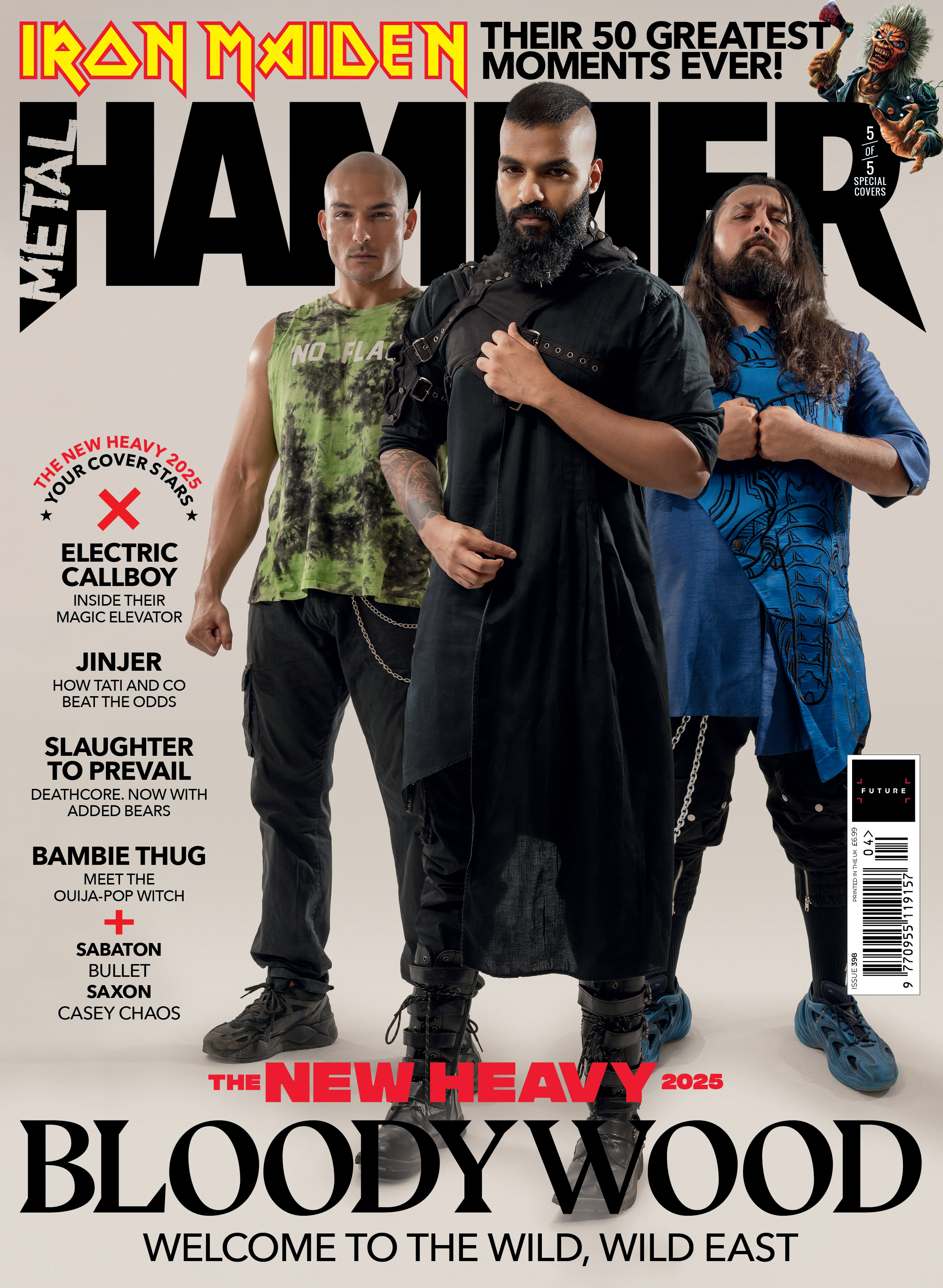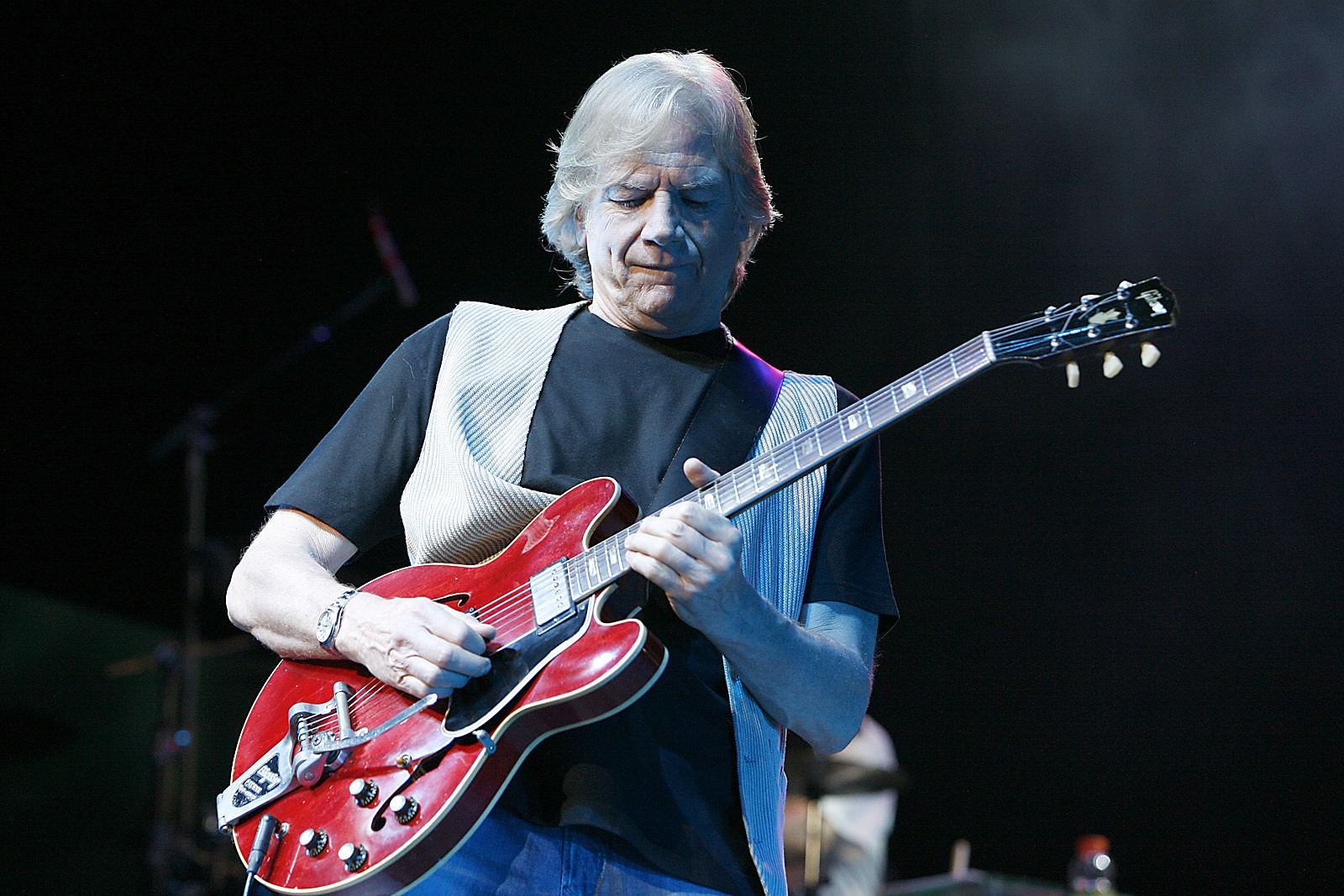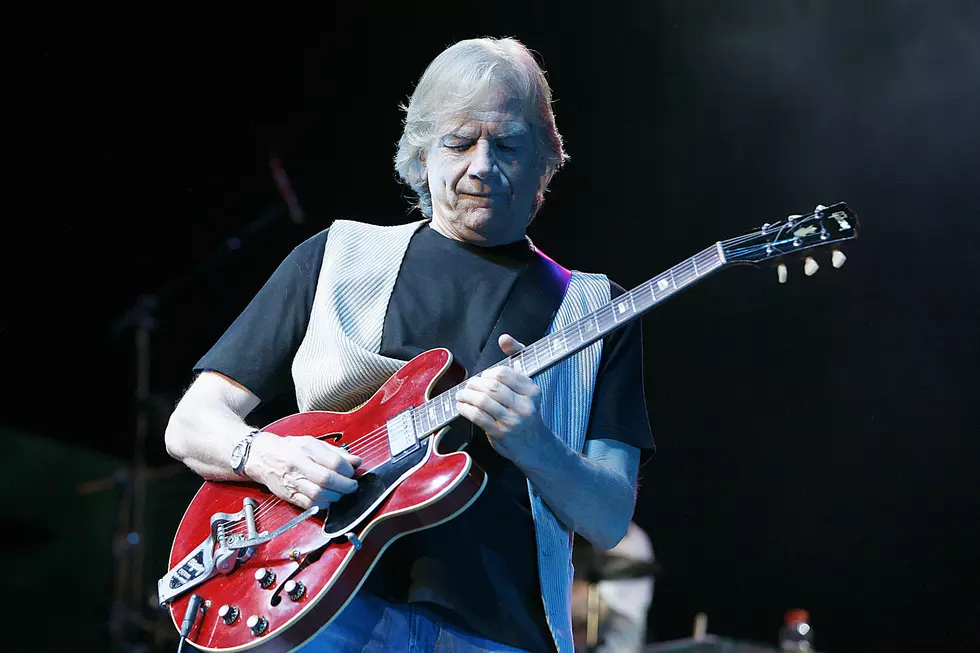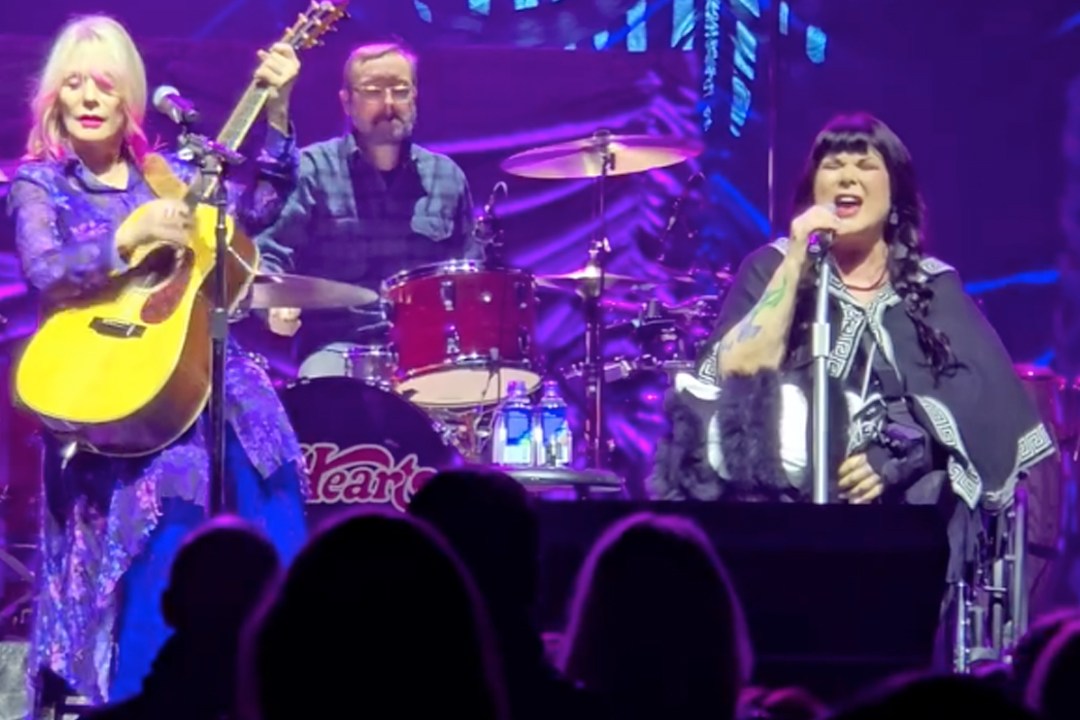
Feature Photo: Adam McCullough / Shutterstock.com
“New” is a word that carries weight. It can be exciting, it can be fleeting, and sometimes, it’s nothing more than an illusion. In rock music, “new” has never meant just one thing—it’s been a promise, a warning, a disguise, and a reminder that time moves forward whether we’re ready or not. Some artists have used it to mark a personal transformation, while others have used it to underscore how quickly admiration fades. Across decades and genres, it has shaped anthems of reinvention, heartbreak, discovery, and even rebellion, proving that a single word can be as adaptable as the music itself.
Donald Fagen’s “New Frontier” wrapped Cold War-era youth in jazz sophistication, using its title to reflect both a literal fallout shelter and a figurative coming of age. Utopia’s “Last of the New Wave Riders” was a high-octane battle cry, electrified by Todd Rundgren’s searing guitar work and a vision of musical revolution. Rush’s “New World Man” examined progress and identity, as the band balanced intricate musicianship with sharp social commentary. Tom Jones brought theatrical flair to “What’s New Pussycat,” a song that thrived on its exaggerated charm and inescapable melody. Jethro Tull’s “A New Day Yesterday” took a grittier approach, weaving blues and rock into a lament about fleeting love and shifting fortunes.
Linda Ronstadt found a different kind of emotional weight in “What’s New,” breathing new life into a jazz standard that simmered with unspoken heartache. The Beatles, on the other hand, abandoned traditional song structure entirely for “What’s the New Mary Jane,” an avant-garde experiment that veered into surrealist absurdity. Melanie’s “Brand New Key” disguised its playful double meanings in roller-skate innocence, turning a simple folk tune into an unlikely hit. Eagles captured the inevitability of being replaced in “New Kid in Town,” where adoration fades as soon as the next big thing comes along. Finally, INXS’ “New Sensation” closed out the list with the opposite message—live in the moment, embrace the thrill, and give in to the energy of something exciting and unknown.
# 10 – New Frontier – Donald Fagen
Donald Fagen’s “New Frontier” was recorded for his debut solo album, The Nightfly, released on October 1, 1982. The track was produced by Gary Katz and recorded at Soundworks Digital Audio/Video Studios in New York City. Fagen, known for his meticulous approach to production, assembled a group of elite session musicians, including Larry Carlton and Hugh McCracken on guitar, Abraham Laboriel on bass, Jeff Porcaro on drums, and Michael Brecker on saxophone. The album’s refined, jazz-influenced aesthetic extended to this track, which seamlessly blended smooth harmonies, a driving yet understated rhythm, and Fagen’s signature narrative songwriting.
“New Frontier” encapsulated a distinctive blend of Cold War anxiety and youthful optimism, framed within the perspective of a young man looking to romance a woman in his family’s fallout shelter. The lyrics carried a subtle irony, juxtaposing the looming fear of nuclear conflict with the protagonist’s coming-of-age aspirations. Lines such as “The key word is survival on the new frontier” played on the era’s obsession with preparedness, while the references to jazz great Dave Brubeck underscored a cultural sophistication emerging alongside 1950s suburban life. The song’s protagonist projected an eagerness to break free from his insulated environment, longing for city life and an artistic future, as expressed in “Well, I can’t wait till I move to the city / Till I finally make up my mind.” This sense of longing aligned with the broader themes of The Nightfly, which reflected Fagen’s nostalgia for the postwar optimism of his youth.
The Nightfly became one of the first digitally recorded albums, highlighting the precise craftsmanship that defined its sound. The song’s subtle groove and refined jazz harmonies made it a standout moment on the record, reinforcing Fagen’s ability to craft evocative storytelling within a highly sophisticated musical framework. The track also had modest chart success, reaching No. 34 on the Billboard Mainstream Rock chart.
Read More: Donald Fagen’s Best Song On Each Of His Solo Albums
# 9 – Last of The New Wave Riders – Utopia
Utopia’s “Last of the New Wave Riders” closed out their 1980 album, Adventures in Utopia, with an explosive surge of electrifying guitar work and grandiose lyrical imagery. Recorded at Utopia Sound in Lake Hill, New York, and produced by Todd Rundgren and the band, the track showcased the group’s seamless blend of progressive rock, power pop, and arena-sized ambition. The album marked a shift toward a more accessible sound compared to the band’s earlier, more complex progressive leanings, yet this song retained the theatrical and anthemic qualities that had always defined their work. Rundgren led the charge with his scorching guitar, while Roger Powell’s synthesizers, Kasim Sulton’s bass, and John “Willie” Wilcox’s drumming provided the song’s relentless drive.
Lyrically, “Last of the New Wave Riders” painted a larger-than-life picture of musicians as warriors, leading a revolution fueled by amplified sound. The song’s protagonist described a world where guitars were weapons, amplifiers shook the earth, and music became a force that reshaped reality. Lines like “Turn on the power, cried the army of sound / And the hum of the amps shook the trees and the ground” evoked an almost apocalyptic musical takeover, reinforcing the band’s vision of rock as an unstoppable force. The chorus, “The last of the new wave riders / Will be the first of the new age masters,” hinted at both an ending and a beginning—an evolution of rock music that left behind the fading trends of the past while ushering in a new era.
Critical reception for Adventures in Utopia was largely positive, with the album reaching No. 32 on the Billboard 200. While the album was best known for the radio-friendly single “Set Me Free,” “Last of the New Wave Riders” remained a defining moment for the band’s die-hard fans. Its intense musicianship, particularly Rundgren’s searing lead work in the song’s introduction, made it a showcase of his virtuosity. The track’s fusion of grand-scale storytelling and blistering instrumentation cemented it as one of the album’s most ambitious pieces.
Read More: Top 10 Utopia Songs
# 8 – New World Man – Rush
Rush recorded “New World Man” for their ninth studio album, Signals, which was released on September 9, 1982. The track emerged unexpectedly late in the recording process at Le Studio in Morin-Heights, Quebec, as the band needed a song to balance the album’s running time. Produced by Rush and Terry Brown, the song featured Geddy Lee on vocals, bass, and synthesizers, Alex Lifeson on guitars, and Neil Peart on drums and lyrics. Unlike the progressive complexity that defined much of their earlier work, “New World Man” adopted a leaner structure, incorporating reggae-inspired rhythms alongside the band’s signature rock energy.
Lyrically, “New World Man” presented a character caught between tradition and progress, a modern archetype navigating the tension between past and future. Peart’s lyrics depicted a man balancing the influences of the “old-world man” and the “third-world man,” reflecting Cold War-era anxieties and the shifting global landscape of the early 1980s. The lines “He’s noble enough to know what’s right / But weak enough not to choose it” underscored the contradictions of human nature, while the chorus reinforced the theme of adaptation and reinvention. In this sense, the song’s thematic scope aligned with Utopia’s “Last of the New Wave Riders,” which also envisioned a transition between eras, though Rush’s take was more introspective and politically charged.
“New World Man” became the highest-charting Rush single in the U.S., reaching No. 21 on the Billboard Hot 100, while also topping the Canadian RPM Singles Chart. Its streamlined approach contrasted with the intricate sonic layering of “New Frontier” by Donald Fagen, another song on this list that explored cultural shifts but through a more personal, narrative-driven lens. While “New World Man” reflected Rush’s embrace of contemporary influences, it retained their signature thoughtfulness, standing as a testament to their ability to evolve without sacrificing depth.
Read More: Alex Lifeson of Rush: The ClassicRockHistory.com Interview
# 7 – What’s New Pussycat – Tom Jones
When What’s New Pussycat? hit theaters in 1965, its title song, performed by Tom Jones, became an instant sensation, capturing the film’s playful and eccentric energy. Written by the legendary duo Burt Bacharach and Hal David, the track was recorded in London and produced by Peter Sullivan. Unlike the sweeping orchestral ballads Jones would later become famous for, this track leaned into theatrical bombast, combining brassy flourishes with a rhythm that felt as unpredictable as the film it accompanied. The song’s over-the-top energy and dramatic vocal delivery set it apart from conventional pop hits of the era, helping it reach No. 3 on the Billboard Hot 100.
“What’s New Pussycat” embraced a mix of flirtation and absurdity, using exaggerated endearments and playful imagery to craft a love song unlike any other. The repeated refrain, “Whoa, whoa,” created an almost hypnotic call-and-response effect, making the song as unforgettable as it was unconventional. In contrast to Rush’s “New World Man,” which tackled themes of self-awareness and global responsibility, “What’s New Pussycat” took a completely different approach to the word “new,” using it as an invitation to charm and surprise. While Donald Fagen’s “New Frontier” explored Cold War-era youth culture with a sense of ironic detachment, Jones’s song thrived on its uninhibited romantic whimsy, showing how vastly different interpretations of “new” could be across genres.
Critics and audiences alike recognized “What’s New Pussycat” for its unique blend of humor and musical sophistication. Bacharach’s signature off-kilter phrasing and unexpected chord progressions made it stand out from standard pop compositions, while Jones’s full-throated delivery elevated it to theatrical heights. The song’s success cemented Jones as a force in popular music and aligned him with Bacharach and David’s string of mid-’60s triumphs. Unlike the explosive instrumentation of Utopia’s “Last of the New Wave Riders,” which turned its title into a statement of rebellion, “What’s New Pussycat” thrived in a world of kitschy grandeur. Both, however, demonstrated the sheer power of a song that refused to be ordinary.
Read More: Top 10 Tom Jones Songs
# 6 – A New Day Yesterday – Jethro Tull
Jethro Tull introduced “A New Day Yesterday” as the opening track of their second studio album, Stand Up, released on July 25, 1969. The song was recorded at Morgan Studios in London and produced by Terry Ellis. Unlike the folk influences that would later define much of Jethro Tull’s sound, this track leaned heavily into the blues-rock territory, driven by Martin Barre’s thick, distorted guitar riffs and Glenn Cornick’s deep, pulsating bass lines. Ian Anderson’s gravelly vocal delivery added to the song’s raw intensity, while Clive Bunker’s drumming provided a steady, forceful groove. The track signaled a shift in the band’s approach following the departure of original guitarist Mick Abrahams, setting the stage for Anderson’s increasing dominance in the group’s musical direction.
“A New Day Yesterday” reflected themes of fleeting love and disillusionment, with Anderson’s words capturing a sense of missed opportunities and inevitable change. The lines “It was a new day yesterday, but it’s an old day now” expressed a shift from optimism to regret, mirroring the song’s heavy, brooding tone. While Rush’s “New World Man” explored the complexities of navigating progress and identity, Jethro Tull’s take on the word “new” leaned into the personal rather than the societal, chronicling the passage of time through the lens of lost connection. Similarly, “New Frontier” by Donald Fagen used its title to reflect a moment of transition, though it carried a more satirical and detached tone compared to Anderson’s emotionally direct lyricism.
Critically, Stand Up marked a turning point for Jethro Tull, reaching No. 1 on the UK Albums Chart and solidifying their presence as a major act in the late 1960s rock scene. “A New Day Yesterday” stood out for its gritty blues influence, a contrast to the more polished and theatrical compositions like Tom Jones’s “What’s New Pussycat” from this list. While Jones’s song thrived on its dramatic flair, Jethro Tull delivered something far earthier, channeling the energy of British blues pioneers like John Mayall and Fleetwood Mac’s Peter Green era. Over time, the song remained a fan favorite, later reimagined in a heavier, more progressive form by Joe Bonamassa, proving its lasting impact in rock history
Read More: 10 Most Underrated Jethro Tull Songs
# 5 – What’s New – Linda Ronstadt
Linda Ronstadt took a bold artistic leap when she recorded “What’s New” for her 1983 album of the same name, a project that redefined her career by moving away from rock and country into the world of traditional pop and jazz. The song, originally written by Bob Haggart and Johnny Burke in 1939, had been recorded by numerous jazz greats, including Billie Holiday and Frank Sinatra, but Ronstadt’s version introduced it to a new generation. Produced by Peter Asher and recorded at Warner Bros. Recording Studios in Hollywood, the track featured the lush orchestration of Nelson Riddle, whose arrangements brought a sweeping grandeur to the song. With Ronstadt’s soaring vocals set against a backdrop of elegant strings and delicate horn flourishes, the recording captured both nostalgia and reinvention in equal measure.
The lyrics of “What’s New” painted a portrait of heartbreak and unresolved longing, as the narrator struggles with seeing an old love once again. Lines like “Probably I’m boring you / But seeing you is grand” conveyed an emotional vulnerability, while the closing admission—“I haven’t changed, I still love you so”—left the song hanging on an unresolved note of sadness. The theme of confronting the past contrasted with the forward-looking perspective of Jethro Tull’s “A New Day Yesterday,” which dealt with fleeting romance but embraced change rather than clinging to what was lost. Similarly, while “New World Man” by Rush explored the tension between progress and tradition on a societal scale, Ronstadt’s song was an intensely personal reflection on love’s lingering impact.
Critically and commercially, “What’s New” proved that Ronstadt’s risk paid off, as the album became a massive success, reaching No. 3 on the Billboard 200 and earning platinum certification. The song’s elegance stood in stark contrast to the energetic bombast of “What’s New Pussycat” by Tom Jones, another track on this list that leaned into theatrical excess rather than restrained melancholy. With “What’s New,” Ronstadt demonstrated a level of vocal control and emotional nuance that reinforced her versatility, and in doing so, she expanded the boundaries of her artistry while bringing classic jazz to mainstream audiences once again.
Read More: Linda Ronstadt’s Best Song On Each Of Her 1970s Studio Albums
# 4 – What’s The New Mary Jane – The Beatles
I bet there are many classic rock fans out there that may turn their heads when they see this one. John Lennon spearheaded “What’s the New Mary Jane” during The White Album sessions in 1968, but the song never made it onto the final release. Instead, it remained unreleased until 1996, when it appeared on Anthology 3. Recorded at Abbey Road Studios and produced by George Martin, the track featured Lennon on vocals and piano, George Harrison on guitar, and contributions from session musicians. Notably absent were Paul McCartney and Ringo Starr, reinforcing its status as more of a Lennon-driven experiment than a fully realized Beatles composition. The song’s unconventional structure and surrealist lyrics placed it in stark contrast to much of the band’s work at the time, aligning it more with their avant-garde explorations than their more polished material.
“What’s the New Mary Jane” read like a fever dream, with fragmented, absurdist imagery that resisted straightforward interpretation. Lines such as “She like to be married with Yeti / He grooving such cooky spaghetti” suggested a playfully nonsensical approach, evoking the influence of Lewis Carroll’s wordplay and the cut-up technique popularized by the Beat poets. The repeated refrain, “What a shame Mary Jane had a pain at the party,” hinted at a central character whose fate remained as ambiguous as the song itself. While “What’s New” by Linda Ronstadt explored heartbreak with classic elegance, Lennon’s song leaned into the bizarre, offering a chaotic counterpoint that shared more DNA with sound collages like “Revolution 9” than with traditional pop songwriting.
Musically, the song’s mix of haunting piano, disjointed percussion, and tape effects created an eerie atmosphere, making it one of the most experimental tracks on this list. Compared to Utopia’s “Last of the New Wave Riders,” which used bombastic instrumentation to tell a tale of musical rebellion, “What’s the New Mary Jane” felt intentionally fragmented, almost as if it were unraveling in real time. Similarly, whereas “New World Man” by Rush used its title to explore societal evolution, Lennon’s composition functioned more as an abstract sonic experiment than a narrative piece. Its eventual release on Anthology 3 solidified its place as one of the Beatles’ strangest outtakes, showcasing the band’s willingness to push boundaries even when it meant stepping outside the realm of conventional songcraft.
Read More: Complete List Of The Beatles Songs From A to Z
# 3 – Brand New Key – Melanie
Melanie recorded “Brand New Key” for her 1971 album Gather Me, capturing a playful yet subtly rebellious spirit within its folk-pop framework. The song was recorded at Allegro Sound Studios in New York City and produced by Peter Schekeryk, who was also Melanie’s husband. With its stripped-down arrangement featuring a bright acoustic guitar, a bouncing bassline, and a whimsical melody, the track stood apart from the heavier, socially conscious folk-rock dominating the era. Released as a single, it became her most commercially successful song, reaching No. 1 on the Billboard Hot 100 and remaining there for three weeks.
The lyrics of “Brand New Key” revolved around an innocent yet suggestive metaphor, with the narrator likening herself to a girl with a new pair of roller skates searching for a counterpart with the “brand new key” to match. While seemingly lighthearted, the song hinted at themes of youthful desire and newfound independence. The line “Some people say I’ve done alright for a girl” reflected a subtle defiance, acknowledging societal expectations while pushing against them. Compared to Jethro Tull’s “A New Day Yesterday,” which used its title to frame a sense of regret and passing time, Melanie’s approach to “new” was about discovery and excitement rather than nostalgia. Likewise, whereas Linda Ronstadt’s “What’s New” conveyed a sense of longing and emotional weight, “Brand New Key” thrived on its playful and carefree delivery.
Despite its cheerful tone, the song attracted controversy, with some listeners interpreting it as an innuendo-laden piece about sexual awakening. Melanie, however, maintained that the lyrics stemmed from a personal experience of fasting and then suddenly craving fast food. Regardless of the debate, the song’s infectious melody and distinctive vocal delivery made it an enduring part of pop culture. Unlike the chaotic experimentation of “What’s the New Mary Jane” by The Beatles, “Brand New Key” adhered to a traditional song structure, proving that simplicity could be just as impactful as avant-garde ambition. Over the years, the song remained a touchstone of 1970s folk-pop, its legacy carried forward through numerous covers and film appearances.
Read More: Top 10 Melanie Songs
# 2 – New Kid In Town – Eagles
Eagles recorded “New Kid in Town” for their fifth studio album, Hotel California, which was released on December 8, 1976. Written by Don Henley, Glenn Frey, and J.D. Souther, the song was recorded at Criteria Studios in Miami and produced by Bill Szymczyk. Featuring Glenn Frey on lead vocals, it was released as the album’s first single on December 7, 1976. The song quickly became a commercial success, reaching No. 1 on the Billboard Hot 100 on February 26, 1977 and No. 20 on the UK Singles Chart. It also topped the Cash Box Top 100 chart and performed strongly in Canada, hitting No. 1 on the RPM Singles Chart. Recognized for its lush harmonies and evocative storytelling, the track won the Grammy Award for Best Vocal Arrangement for Two or More Voices in 1978.
“New Kid in Town” explored the fleeting nature of fame and admiration, particularly in the music industry. The opening lines, “There’s talk on the street, it sounds so familiar,” introduced the inevitable rise and fall of a new sensation, whether it be an artist, a lover, or a public figure. The repeated refrain, “There’s a new kid in town,” reinforced the idea of transience—how adoration can vanish as quickly as it arrives. In contrast to Melanie’s “Brand New Key,” which used its title to convey youthful excitement, Eagles approached the concept of “new” with a sense of weariness, highlighting the impermanence of success. Similarly, while Jethro Tull’s “A New Day Yesterday” reflected on personal change, “New Kid in Town” examined the same theme through a broader lens, applying it to fame, fortune, and relationships.
Musically, the song’s soft rock arrangement blended acoustic and electric guitars with a rich vocal harmony that became an Eagles trademark. Don Felder’s guitar fills and Joe Walsh’s subtle electric piano complemented Frey’s laid-back delivery, creating a deceptively smooth sound that masked the song’s melancholic undercurrent. This polished production contrasted with the raw blues influence of “A New Day Yesterday” and the surrealist chaos of The Beatles’ “What’s the New Mary Jane.” Despite its easygoing feel, the song carried a sense of inevitability—whether in love, music, or life, everyone is eventually replaced by someone newer and more exciting.
Read More: Complete List of Eagles Songs From A to Z
# 1 – New Sensation – INXS
INXS recorded “New Sensation” for their 1987 album Kick, an album that cemented their status as international rock stars. Produced by Chris Thomas and recorded at Rhinoceros Recordings in Sydney, the song blended funk-infused guitar riffs, driving rhythms, and Michael Hutchence’s charismatic vocals into a track designed for stadium-sized energy. Released as a single in January 1988, it became one of the band’s biggest hits, reaching No. 3 on the Billboard Hot 100 in the U.S. and charting in multiple countries, including No. 1 in Canada and No. 9 in Australia. The song’s sleek production and dynamic instrumentation reflected the band’s ability to fuse rock, new wave, and dance elements into a sound that resonated across the late ’80s pop landscape.
Lyrically, “New Sensation” was an electrifying call to seize the moment, embrace passion, and live without regret. The opening line, “Live, baby, live, now that the day is over,” introduced the song’s infectious urgency, while “It’s gonna take you over” reinforced its theme of surrendering to life’s intensity. Unlike Eagles’ “New Kid in Town,” which dwelled on fleeting admiration and inevitable replacement, INXS took the word “new” in an entirely different direction—celebrating reinvention, pleasure, and the thrill of the present. The song’s vibrant message also set it apart from the nostalgic longing of “A New Day Yesterday” by Jethro Tull and the introspective heartbreak of “What’s New” by Linda Ronstadt.
Musically, the song’s jangling, staccato guitar riffs, played by Tim Farriss, provided a sharp rhythmic punch, while Kirk Pengilly’s saxophone accents added a layer of warmth and swagger. Garry Gary Beers’ bassline locked into a tight groove with Jon Farriss’ drums, creating an irresistible pulse that drove the track forward. Compared to the dreamy, acoustic charm of Melanie’s “Brand New Key,” “New Sensation” thrived on relentless, high-energy momentum, making it the perfect closing track for this list. As the final entry, it left the article on a definitively euphoric note, encapsulating the spirit of transformation and excitement that each song on the list explored in different ways.
Read More: Top 10 INXS Songs
Check out similar articles on ClassicRockHistory.com Just click on any of the links below……
Read More: Artists’ Interviews Directory At ClassicRockHistory.com
Read More: Classic Rock Bands List And Directory
10 Best Songs With The Word ‘New’ In The Title article published on Classic RockHistory.com© 2025







